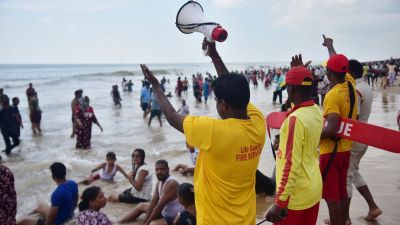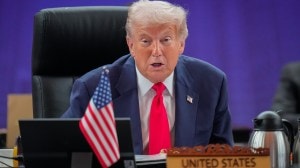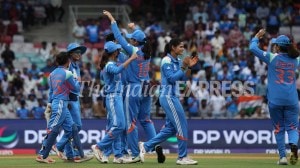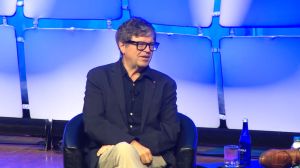China was just a red herring
The government has handled reasonably well the aftermath of the nuclear tests. But the China-centric justification for the detonations has b...

The government has handled reasonably well the aftermath of the nuclear tests. But the China-centric justification for the detonations has baffled Sinologists. The Foreign Office was aghast. Brajesh Mishra, upon whom Mao supposedly smiled at one time, appears to be the main architect of the strategy.
Targeting just Pakistan ran the risk of uniting the Muslim bloc of countries. Had Pakistan retaliated with its nuclear device, it might then have acquired the character of an Islamic bomb. The internal implications for 150 million Muslims in India, with a pro-Hindu government in the saddle, do not need to be spelled out.
As it is, it took the Narasimha Rao government years to win back the goodwill of the Islamic states after Babri. The inclusion of China as one of the reasons for India’s nuclear test was part of a deflective strategy. No one would buy the explanation that India needed a thermonuclear device for Pakistan. And hardly any Islamic country has come to the support of Pakistan in the initialround.
The second calculation of the government was probably to throw a sop to the US Congress. The US President can go in for a sanctions waiver if there is a joint resolution of Congress that it would promote non-proliferation. The US Congress is not as soft on China as Clinton, though neither a waiver nor the lifting of sanctions will be a cakewalk.
Notwithstanding its laws, the US cannot afford to weaken India beyond a point. It needs India as a countervailing force against China. There is a growing realisation in the US that it may be easier to do business with a democratic India than with an unpredictable and inscrutable China.
At one stage, the government was planning the tests two months down the line. Nuclear detonations just before Clinton’s visit to India in November would have constituted a slap in the face. To go in for them after his visit would also have presented difficulties. It is no secret that the US President would not like to go back empty-handed. The CTBT has been his petproject.
George Fernandes’ pronouncements against China came in handy. Had there not been a George, the government may have had to invent one. The firing of the Pakistani missile Ghauri became yet another alibi. It was also a good way to silence the tantrums of the BJP’s allies. The only way the government could have avoided making China its whipping boy was to play down the security angle, as Indira Gandhi did in 1974.
She claimed that Pokharan-I was only for peaceful purposes. Since the raison d’etre of the tests this time is the CTBT, Atal Behari Vajpayee had no option but to announce to the world that India was now a nuclear weapon state. With the CTBT coming up for review in September 1999, pressure was mounting on India to sign. The treaty cannot go through if the threshold states — North Korea, Pakistan and India — continue to resist.
The choice for India was to face the possibility of punitive action from the international community by continuing to hold out on the CTBT or to go aheadand test, and face sanctions. The US, which has introduced in its Congress the Nuclear Non-Proliferation Policy Act of 1998, will press North Korea, India and Pakistan to sign the treaty. It also plans to consider, with the signatory nations, the measures to be taken against those who refuse to sign. This is just a euphemism for tightening the screws.
The government has not done too badly on the diplomatic front. It is not as if India has been isolated internationally. While the US has imposed sanctions as expected and Japan stopped aid, this is not the case with Britain, France, Germany or Russia. Nor was the reaction of the G-8 harsh. After the initial condemnation, the UN Secretary General turned around to say that the nuclear club could not be too exclusive. The International Atomic Energy Commission said India had violated no law. The NAM Foreign Ministers’ conference in Cartagena endorsed India’s stand.
In the coming weeks, the government will have to use all its negotiating skills to evolve amodality by which it can be recognised as a de facto nuclear weapons state, even if it isn’t de jure: get the nuclear suppliers’ group to agree to transfer of reactors by private companies and to trade in nuclear technology; and persuade the US to lift its sanctions.
But the government has not come out with flying colours on the home front. There has been much multispeak by the BJP and its front organisations. Having demonstrated strength in no uncertain terms, there was hardly any need for Madanlal Khurana or Giriraj Kishore to talk about another war with Pakistan or for the VHP to advocate the construction of a temple at Pokharan.
There is no doubt that people are united not by diplomatic language but by an emotive issue. The blasts provide a golden opportunity to prepare the people to tighten their belts, even though there is a plan to get the sanctions lifted. Steps which herald the unity and determination of the nation would send out an important signal to the international sphere.
Lal BahadurShastri had instituted the Monday fast; Indira Gandhi had got people to cut down on rice so that the surplus could be sent to rice-starved Kerala. These were symbolic gestures, but they reflected the people’s resolve to meet a challenge. A Prime Minister has to make them. He has to galvanise the nation, not just lead a party or a government.






- 01
- 02
- 03
- 04
- 05

























